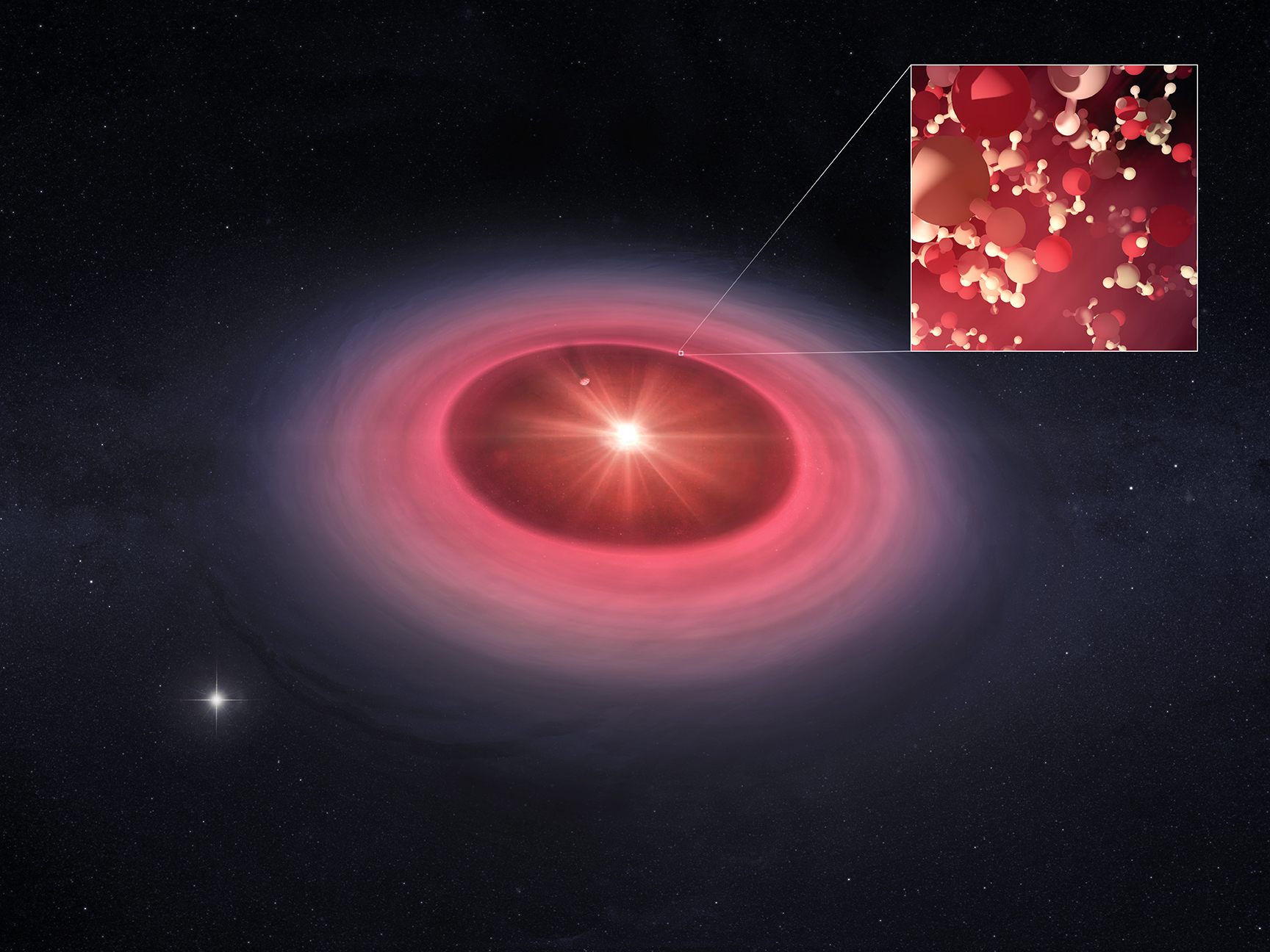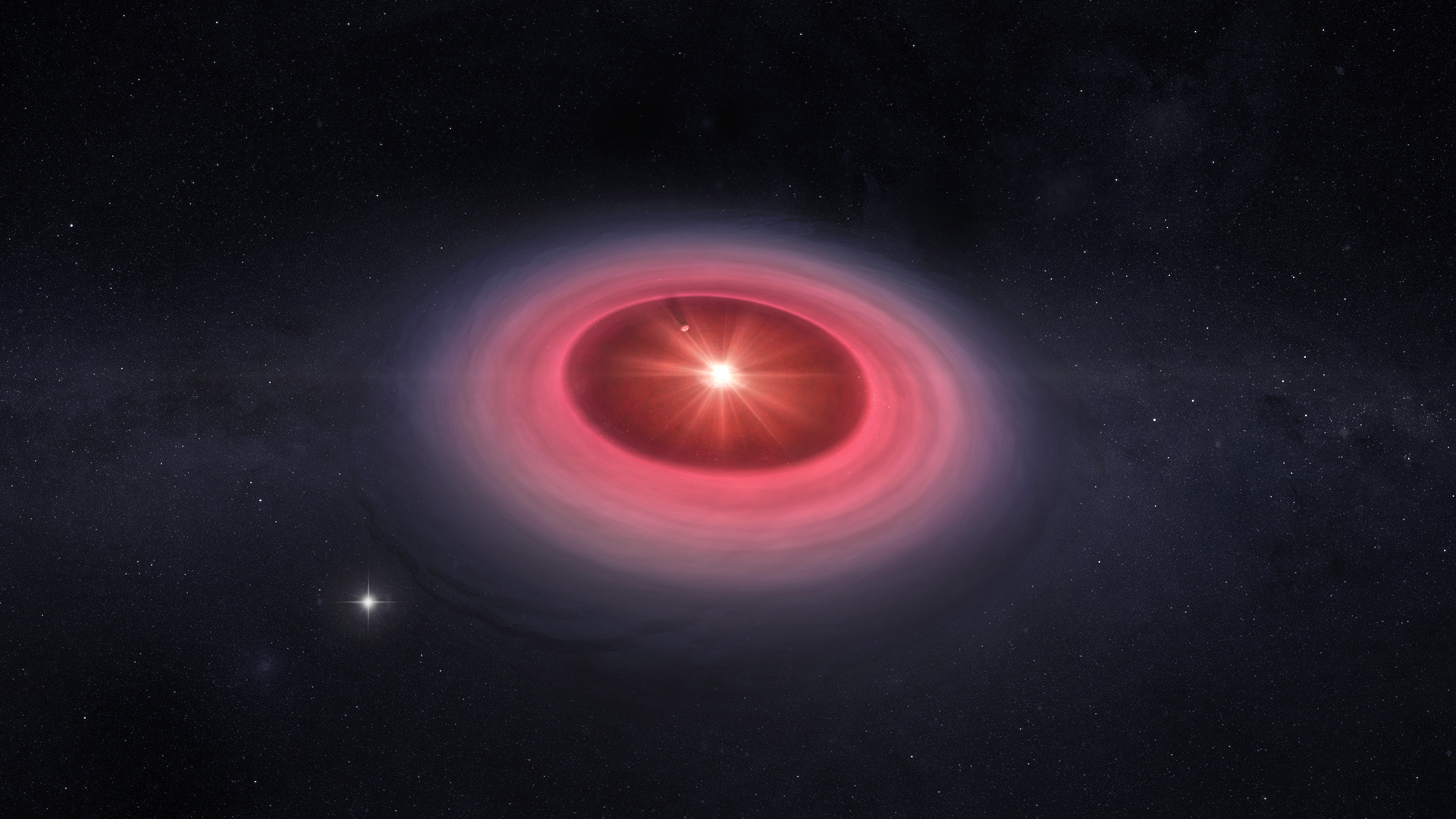Image List
-

This artist's conception shows a disk of dust and gas surrounding a young star with a large cavity carved out by a forming giant planet. The warm methanol gas tracing the dust cavity wall is highlighted. These molecules originate from ices rich in organic matter that are heated by radiation from the star, forming gas. The detection of methanol, as well as the methanol isotopes, supports the idea that interstellar ices can survive the formation of planet-forming disks.
Credit: CfA/M. Weiss
-

This artist's conception shows a disk of dust and gas surrounding a young star with a large cavity carved out by a forming giant planet. The warm methanol gas tracing the dust cavity wall is highlighted. These molecules originate from ices rich in organic matter that are heated by radiation from the star, forming gas. The detection of methanol, as well as the methanol isotopes, supports the idea that interstellar ices can survive the formation of planet-forming disks.
Credit: CfA/M. Weiss